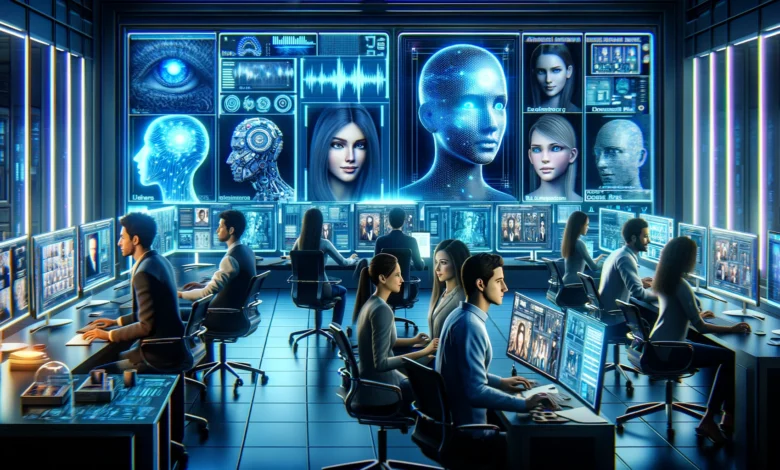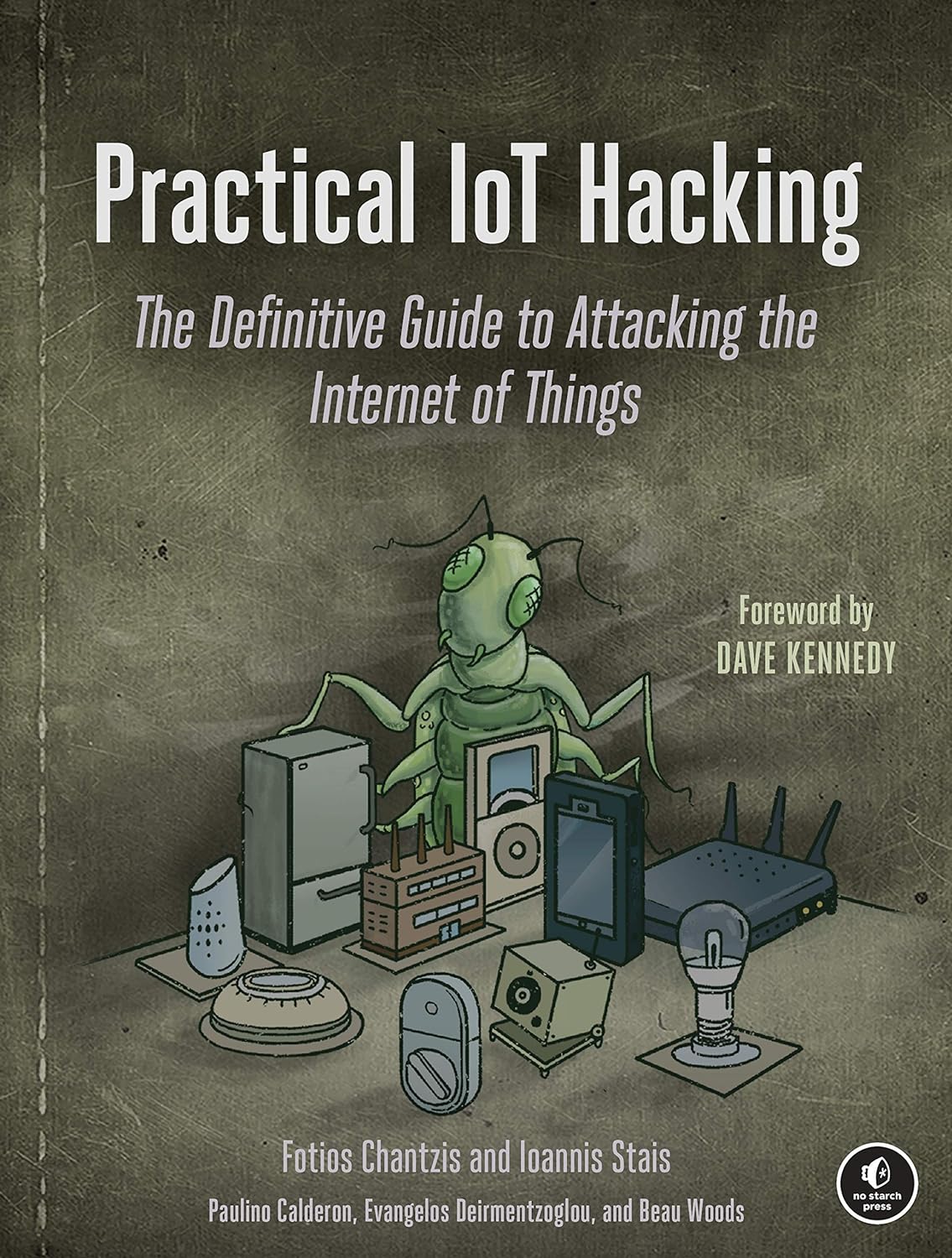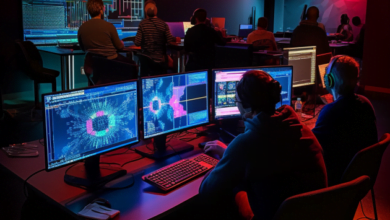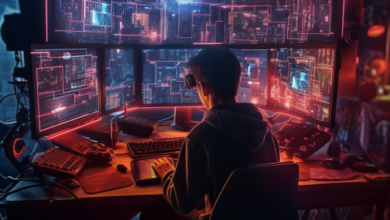The Rise of Deepfake Technology: Security Implications and Countermeasures
Confronting the Cybersecurity Challenges Posed by Deepfakes

Welcome to the cutting-edge yet daunting world of deepfake technology—a digital phenomenon reshaping the media, privacy, and security landscape. As members of the BugBustersUnited community, it’s essential to grasp the capabilities and risks of this powerful technology, as it increasingly plays a significant role in cybersecurity challenges.
So, what exactly is deepfake technology? At its core, deepfake involves sophisticated artificial intelligence and machine learning techniques to manipulate audio and video content, creating realistic forgeries that are often indistinguishable from the original. This technology leverages algorithms known as deep neural networks, which can learn and mimic individuals’ facial expressions, voice, and mannerisms from just a handful of available data points.
The significance of understanding deepfake technology cannot be overstated, especially in today’s digital era, where visual and auditory content is often taken at face value. The ability of deepfakes to seamlessly blend fiction with reality poses unprecedented challenges. For instance, in the realm of cybersecurity, deepfakes can be used to impersonate public figures in videos, create fraudulent audio recordings, and even manipulate stock markets or influence political elections.
As this technology evolves and becomes more accessible, the potential for misuse grows, making it crucial for cybersecurity professionals and the general public to stay informed and vigilant. Recognizing a deepfake and understanding its construction and purpose is the first step in developing effective strategies to counteract its potential misuse. This knowledge is vital for protecting individual privacy and security and safeguarding the broader societal norms and processes that rely heavily on the authenticity of audio and visual communications.
As we delve deeper into the capabilities and risks of deepfakes, remember that knowledge is power. By staying informed and prepared, we can better navigate the complexities of this emerging technology and its implications for security and authenticity in the digital age. Join me as we explore how deepfake technology came to be, the threats it poses, and how we can combat these through innovative countermeasures.
The Evolution of Deepfake Technology
As we continue exploring deepfake technology, it’s crucial to understand how this tool has evolved from rudimentary media manipulation to the sophisticated AI-driven phenomenon we see today. This journey not only highlights the rapid advancements in artificial intelligence and machine learning but also sets the stage for understanding the potential threats and challenges posed by deepfakes.
Early Media Manipulation: The roots of deepfake technology lie in the broader field of media manipulation, which has existed for as long as photography and film. Early efforts to alter photos or videos were manual and time-consuming, requiring substantial skill and often leaving visible traces of alteration. However, the digital age brought new editing tools, eventually leading to more seamless manipulations.
Rise of Computer Graphics and CGI: The development of computer graphics and CGI (computer-generated imagery) marked significant milestones in media manipulation. Films and video games pushed the boundaries of what could be visually represented, creating entirely digital characters that could interact with live actors or environments convincingly. This era set the groundwork for the type of digital manipulation necessary for creating deepfakes.
Breakthroughs in Machine Learning: The actual transformation in media manipulation came with machine learning and neural networks. Researchers began using these tools to teach computers how to recognize and replicate patterns in data, including human faces and voices. A pivotal moment was the development of Generative Adversarial Networks (GANs) in 2014, where two neural networks compete with each other to create and detect manipulated images, continuously enhancing the realism of the output.
Public Awareness and Accessibility: Deepfake technology entered the public consciousness around 2017 when developers started using deep learning to create convincing fake videos of celebrities and politicians. Tools and apps that simplified creating deepfakes made the technology accessible to a broader audience, highlighting both its creative potential and its potential for misuse.
Current State and Ongoing Developments: Today, deepfake technology is incredibly sophisticated, with new developments continually emerging from both academic and independent tech communities. The technology can now generate not only convincing visuals but also synthesize voices, mimic facial expressions in real-time, and even alter pre-existing video content contextually.
The evolution of deepfake technology from simple edits to complex AI-driven manipulations exemplifies modern AI’s incredible potential and significant risks. As this technology continues to evolve, the implications for personal privacy, security, and misinformation become increasingly substantial, making it paramount for cybersecurity professionals to keep pace with these developments. Understanding this historical progression is crucial for developing effective strategies to identify, mitigate, and counteract the potential misuse of deepfakes.
Potential Harms of Deepfakes
As deepfake technology becomes more sophisticated and widespread, its potential for misuse across various sectors grows exponentially. This technology’s ability to create highly realistic and difficult-to-detect fake content can significantly affect politics, finance, and personal reputation. Understanding these potential harms is crucial for developing effective countermeasures and maintaining trust in digital media.
Political Misuse: In the political arena, deepfakes seriously threaten their ability to influence elections and spread misinformation. Fake videos or audio recordings can create false impressions of political figures, misleading voters or sparking unwarranted backlash. For example, a deepfake could show a political leader making inflammatory comments they never actually made, potentially swaying public opinion during critical times such as elections. The spread of this kind of content can undermine the integrity of democratic processes and escalate political tensions.
Financial Fraud: The financial sector is also vulnerable to the impacts of deepfakes. Cybercriminals can manipulate stock markets by spreading false information about companies and influencing stock prices for personal gain. For instance, a convincingly altered video of a CEO making fraudulent claims about financial health or business partnerships could lead to significant fluctuations in stock prices. Additionally, deepfakes can facilitate identity theft and fraudulent transactions by mimicking the identity of legitimate account holders or company officials in video calls and meetings.
Personal Reputation and Privacy: On a personal level, deepfakes can be used to harm individuals’ reputations, blackmail, or harass. Private individuals may find themselves the subject of fake videos that place them in compromising situations or making statements they never actually said. Such content can be devastating to personal relationships, professional careers, and overall mental health. Moreover, the misuse of deepfake technology can lead to severe privacy invasions, as creating convincing fakes only requires photos or videos that are often easily accessible on social media.
Social Engineering: Deepfakes can play a decisive role in social engineering attacks, where deceivers manipulate individuals into breaking routine security procedures or divulging confidential information. Attackers can trick victims into handing over sensitive data, transferring funds, or granting access to restricted areas by impersonating trusted figures. The realistic nature of deepfakes makes them particularly effective in such scams, as they can be compelling to unsuspecting targets.
The potential harms of deepfakes highlight the need for vigilance and preparedness across all sectors. As technology advances, the ease of creating and disseminating fake content will likely increase, making it imperative for individuals and organizations to strengthen their ability to detect and respond to deepfakes. By understanding these threats, we can better safeguard against the malicious use of this powerful technology and preserve the integrity of our digital interactions.
Challenges to Traditional Authentication Methods
Deepfake technology introduces new threats and exacerbates existing vulnerabilities in our security and authentication frameworks. As we rely heavily on audiovisual content for communication, identity verification, and information dissemination, deepfakes pose significant challenges to these traditional methods. Understanding these challenges is crucial for adapting and strengthening our security systems to cope with advanced digital threats.
Undermining Visual and Audio Verification: Traditional authentication methods often depend on visual and audio cues to confirm the identity of individuals. For instance, video conferencing tools, secure entry systems, and remote access protocols may use facial recognition or voice verification to grant access. Deepfakes directly challenge these security measures by their ability to mimic an individual’s appearance and voice with high accuracy. This capability can lead to unauthorized access to sensitive environments, systems, or information, as malicious actors can convincingly impersonate others.
Reliability of Media as Evidence: In legal and journalistic contexts, audio and video recordings have long been considered reliable evidence for verifying facts and establishing truths. However, the advent of deepfakes shakes the foundation of this trust. When it becomes difficult—or even impossible—for the average person to distinguish between genuine and forged content, the integrity of media as a credible source of information is severely compromised. This can lead to various legal challenges, including wrongful accusations, misinformation in court cases, and a general erosion of judicial reliability.
Impact on Public Trust: Perhaps one of the most profound effects of deepfakes is their impact on public trust. In a society where seeing is believing, the ability to manipulate audio and video content so convincingly shakes the very core of this belief system. The spread of deepfakes can lead to a general mistrust of media, impairing public discourse and skewing democratic processes. People may begin to doubt genuine content or disregard real issues due to skepticism, leading to a destabilized informational landscape where truth becomes a rare commodity.
Challenges in Detection and Response: Traditional security systems are not equipped to automatically detect deepfakes, as they typically look for known malware signatures or anomalies in code, not content. The sophistication of deepfakes requires advanced detection techniques that can analyze the nuances of human expression and speech patterns—capabilities still under development. Additionally, the rapid growth and dissemination of deepfake technology outpace the current response mechanisms, making it difficult for security professionals to keep up with threat actors.
The rise of deepfakes highlights the urgent need to evolve our authentication and security measures. As traditional methods become less effective against such sophisticated manipulation, developing new technologies and approaches to detect and mitigate these threats becomes increasingly important. Strengthening digital literacy among the public to understand and question the authenticity of their media consumption is also crucial. By addressing these challenges, we can work towards restoring trust and security in our digital communications.
Detecting Deepfakes: Strategies and Tools
Developing effective detection methods is crucial as the threat of deepfakes becomes more pronounced. This section outlines the current strategies and tools to identify and combat these sophisticated forgeries. These technologies enhance our ability to discern real from fake and play a vital role in maintaining the integrity of digital communications.
AI-Driven Analysis Tools: Advancements in artificial intelligence provide a promising avenue for detecting deepfakes. AI-driven tools utilize machine learning algorithms to analyze videos and audio for signs that are indicative of manipulation. These systems are trained on vast datasets of real and fake media, learning to spot subtle discrepancies in facial movements, voice modulation, and image consistency that may elude human observers. For example, AI can detect unnatural blinking patterns, lip sync errors, and skin tone or lighting inconsistencies that typically occur in deepfaked content.
Behavioral Cues and Inconsistency Detection: Research into behavioral cues offers another detection layer. This approach focuses on identifying unnatural movements or expressions not typical of the individual being depicted, such as irregular eye movements or facial expressions that do not align with spoken words. Inconsistency detection extends beyond the individual to the broader context of the video or audio. It looks for anachronistic elements or geographical and temporal inconsistencies that suggest manipulation. For instance, the presence of objects or backgrounds that do not align with the supposed time or location of the recording can be a red flag.
Digital Forensic Techniques: Digital forensic tools have been adapted to address the challenge of deepfakes. These tools analyze the digital fingerprints left by editing software. Techniques such as examining compression artifacts, pixel-level inconsistencies, and noise distribution patterns can help reveal whether a piece of media has been altered. Forensic analysis is particularly useful in settings where high levels of accuracy are required, such as legal proceedings or journalistic fact-checking.
Blockchain for Authentication: To combat deepfakes at the source, some solutions involve using blockchain technology to verify the authenticity of videos and audio at the point of creation. Blockchain can provide a clear provenance trail by creating a tamper-proof ledger of original recordings. Each piece of content would have a unique, immutable record, allowing users to verify its origin and ensuring that any subsequent alterations are logged and transparent.
Public and Private Collaboration: Given the complexity of deepfake detection, collaboration between academia, industry, and government is crucial. These partnerships can accelerate the development of more sophisticated detection tools and help standardize methods for testing and verifying the authenticity of digital media. Sharing knowledge and resources can also help keep detection technologies ahead of the rapidly evolving deepfake generation capabilities.
Developing and implementing these strategies requires a multi-faceted approach that includes technological innovation, regulatory frameworks, and public awareness campaigns. As deepfake technology continues to evolve, so too must our methods for detecting and countering it, ensuring that we can trust the integrity of our digital media.
The Role of Digital Literacy
In the battle against deepfakes, technology alone is not enough. Enhancing the digital literacy of the general public is equally crucial. This section emphasizes the importance of educating people about deepfakes, not only to help them discern what is real from what is fabricated but also to foster a more informed and skeptical approach to digital content consumption.
Educating the Public: Digital literacy programs play a pivotal role in combating the spread and impact of deepfakes. By educating individuals on how to assess the authenticity of digital content critically, we empower them to question and verify the information they consume. These programs should cover the basics of deepfake technology and the common signs of manipulated media. Furthermore, they should teach essential skills such as cross-referencing sources, looking for verification from credible media outlets, and using available digital tools to check media authenticity.
Critical Assessment Skills: Enhanced digital literacy means understanding and actively questioning the content we encounter. This includes being aware of the context in which information is presented, recognizing the potential biases in media, and understanding misinformation’s economic and political implications. These skills are essential in a digital age where algorithms often determine the information we see based on engagement rather than accuracy.
Role of Media Organizations: Media outlets and platforms are responsible for disseminating knowledge about deepfakes. As trusted sources of information, they are well-positioned to educate the public about the risks and realities of digital content manipulation. This can be achieved through regular reporting on issues related to deepfakes, showcasing studies and expert opinions, and even partnering with tech experts to provide educational content directly associated with spotting deepfakes.
Collaborative Efforts: Combating deepfakes requires collaboration between educational institutions, tech companies, non-profit organizations, and government agencies. These entities can work together to develop comprehensive digital literacy curricula and public awareness campaigns. Social media platforms can also contribute by implementing better content moderation policies and labeling or removing content identified as a deepfake.
Long-Term Commitment: Building a digitally literate society is a long-term commitment. It requires ongoing education and adaptation to keep pace with technological advances. The ultimate goal is to create an environment where the public understands the implications of deepfakes and is equipped with the tools and knowledge to mitigate their impact.
By investing in digital literacy, we not only enhance individual and societal resilience against deepfakes but also contribute to a broader cultural shift towards more critical and informed media consumption. This shift is essential for maintaining the integrity of our digital discourse and safeguarding democratic processes against the corrosive effects of manipulated media.
Legislative and Technological Countermeasures
As deepfake technology evolves, so must the frameworks that govern its use and manage its potential for harm. This section examines legislative actions and technological innovations designed to mitigate the risks associated with deepfakes. By exploring these dual approaches, we can better understand how policy and technology can work in tandem to protect individuals and societies from the negative impacts of this powerful digital tool.
Legislative Efforts to Regulate Deepfakes: Various countries and states have begun to recognize the urgent need for legislation explicitly targeting the malicious creation and distribution of deepfakes. Laws are being proposed and enacted that aim to criminalize the use of deepfakes for harm, such as in non-consensual pornography, fraud, election interference, and other forms of personal and political sabotage. For example, in the United States, some states have passed laws that impose criminal penalties for creating or distributing deepfakes that intend to influence the outcome of an election or harm an individual’s reputation. At the federal level, lawmakers are considering bills that would require digital content to be labeled if altered significantly from its original version to include or omit a material aspect of the content.
Technological Safeguards and Innovations: Alongside legislative measures, technological solutions are crucial in the fight against deepfakes. Tech companies and researchers are developing advanced detection systems that utilize artificial intelligence and machine learning to identify altered content more effectively. For instance, platforms like Facebook and Google are investing in AI that can detect subtle anomalies in video and audio files that might indicate manipulation.
Moreover, some platforms are implementing digital watermarking technologies that can embed invisible marks or codes in authentic videos at the point of creation. These watermarks can be used to verify the content’s integrity later, helping platforms and end-users identify whether a video has been altered from its original form.
Implementing Standards and Protocols: Developing industry-wide standards and protocols is also vital. These standards would guide the ethical use of synthetic media technologies and outline procedures for content authentication across platforms. By establishing a common framework for digital content verification, tech companies can create a more unified front against the spread of deepfakes.
Collaborative Efforts Between Public and Private Sectors: Collaboration between governments, technology companies, and civil society is essential to address the deepfake challenge effectively. This includes sharing best practices, research findings, and technological solutions that can help detect and mitigate the spread of deepfakes. Public awareness campaigns supported by these collaborations can also play a critical role in educating citizens about the nature of deepfakes and the tools available to verify content.
In conclusion, addressing the challenges posed by deepfakes requires a multi-faceted approach that combines legislative action with cutting-edge technology and industry collaboration. By implementing comprehensive legislative frameworks and developing advanced technological solutions, we can better protect against the misuse of deepfake technology and maintain the integrity of digital media. This proactive and combined approach will help ensure that societies can harness the benefits of this technology while minimizing its potential for harm.
A Multi-Faceted Approach to Maintaining Digital Trust
As we conclude our exploration of the complexities surrounding deepfake technology, it’s evident that the threats posed by these digital forgeries are as multifaceted as the solutions required to combat them. A holistic approach that integrates technology, legislation, and education is essential to navigate this evolving landscape. Here at BugBustersUnited, we’ve seen firsthand how AI innovations have empowered and challenged our digital security frameworks. As such, maintaining digital trust in the face of deepfakes demands ongoing vigilance and adaptation.
The Need for a Comprehensive Strategy: The importance of a multi-pronged strategy cannot be overstated. Technological solutions, such as advanced detection systems and digital watermarking, play a crucial role in identifying and mitigating deepfake content. However, technology alone is not sufficient. Robust legislative frameworks are necessary to define clear legal boundaries and penalties for the misuse of deepfake technology, providing a deterrent against its exploitation. Furthermore, enhancing digital literacy among the general public is vital to empower individuals to discern and challenge the authenticity of the digital content they consume.
Ongoing Vigilance and Adaptation: The landscape of digital media and cybersecurity is perpetually shifting, with advancements in deepfake technology rapidly evolving. This requires our security measures and legal regulations to be dynamic and responsive. We must continue to monitor the development of deepfakes, adapt our strategies to new threats, and continuously update our legal and regulatory frameworks to cover emerging vulnerabilities and tactics.
Call to Action for the BugBustersUnited Community: In the spirit of collective security and improvement, we encourage all members and visitors of the BugBustersUnited community to share their experiences, insights, and strategies related to deepfake technology and other cybersecurity challenges. Whether you’ve encountered deepfakes in your work, developed tools or methods to detect them, or have ideas about how to educate others about these threats, your contributions are invaluable. By pooling our knowledge and resources, we can develop more effective defenses, enhance our community’s resilience, and continue to lead in the field of cybersecurity.
Your Experience Matters: Please share your thoughts on the usage, benefits, drawbacks, or any other aspects of deepfake technology and bug bounty hunting. Your feedback and experiences are crucial for enhancing our community’s understanding and response to these digital threats. Together, we can foster a more informed and secure digital environment, safeguarding our collective digital trust against the deceptive allure of deepfakes.






